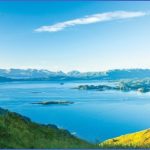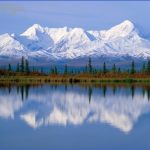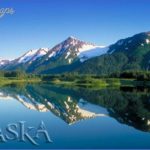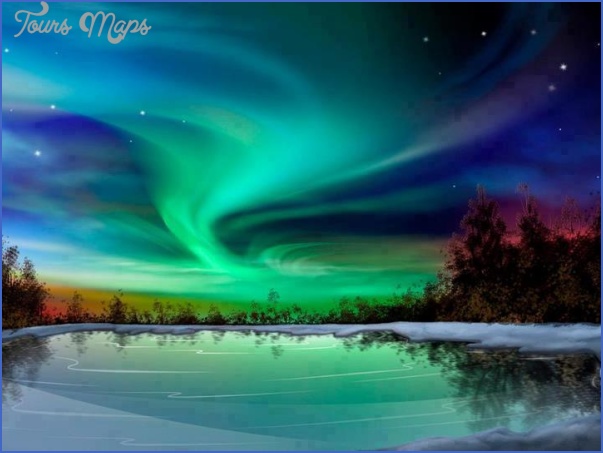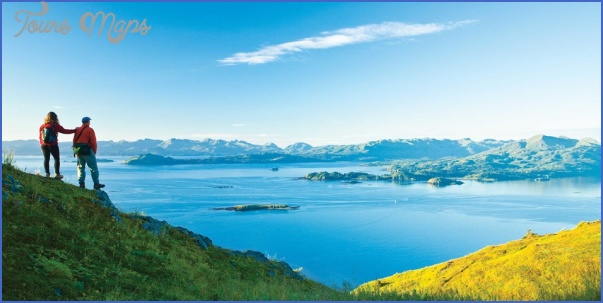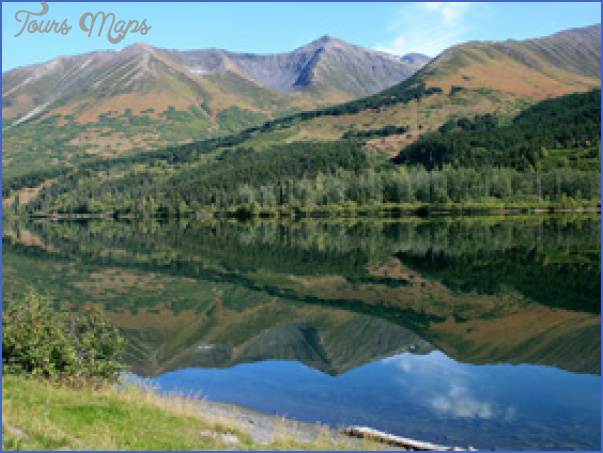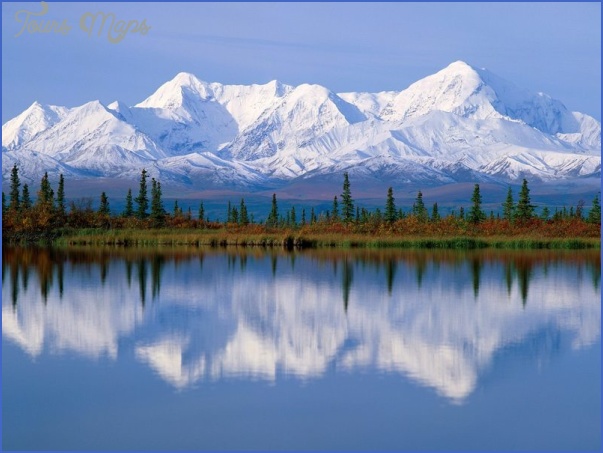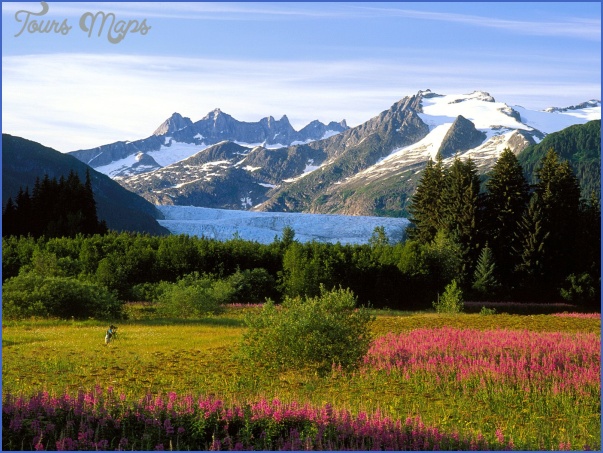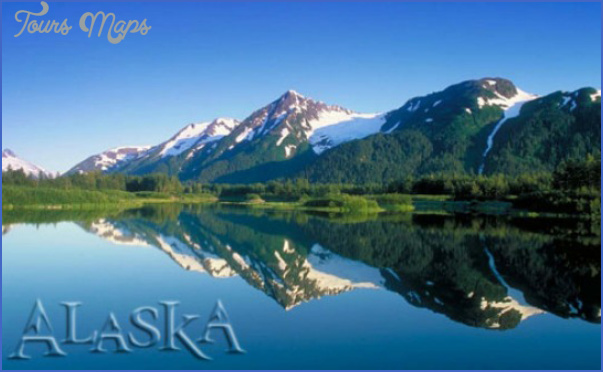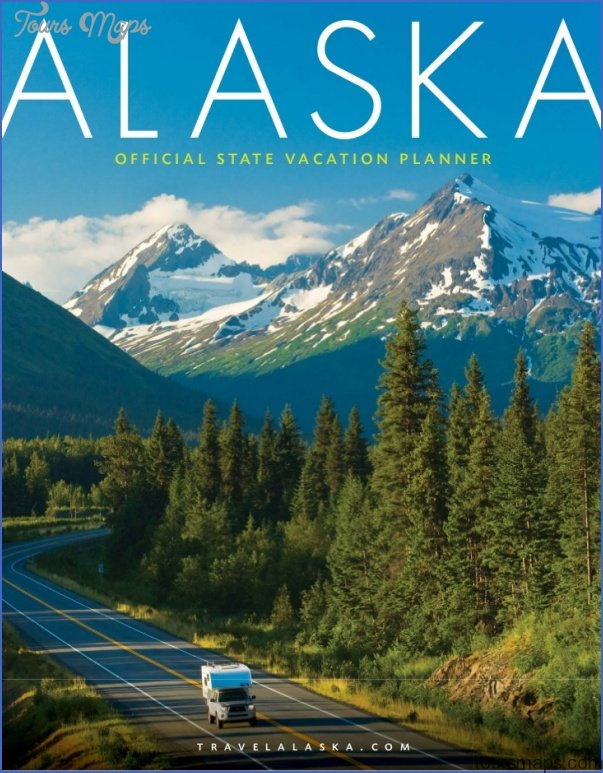Tourism is a major Alaska industry, one that the State Division of Tourism officials feel will flourish and fill in the economic gap left as the supply of oil diminishes. Alaska’s natural beauty will remain even though its salmon and haddock come and go and the price of timber rises and falls. In 1981, 660,000 visitors came to Alaska mostly to revel in its natural beauty and to experience America’s last frontiers. They left something like $434 million while cruising, traveling the few Alaskan highways, fishing, hunting, and viewing scenery as spectacular or more so than any in the world. They arrived mostly by ship or air necessarily because there is only one highway into the state, that from the neighboring Yukon Territory, the Alaska Highway, the engineering marvel of World War II.
Alaska is sold on selling Alaska to more people. The current governor is the state’s largest hotel owner and operator. The Division of Tourism’s budget for 1983 is $6.25 million and it will spend two million of it on national TV advertising the wonders of Alaska. All told, depending on how a hotel is defined, there are ten thousand to twelve thousand guest rooms in Alaska. In 1983 a statewide lodging association was formed.
Visitors tend to fall into one of three groups: those who arrive by ship generally retired, older and fairly affluent; adventurous families who come via the Alaska Highway from the lower states and Canada; and those who come by air, who represent a middle-age and middle-income group.
Travel costs range widely. The backpacker may take a state-operated ferry from Seattle; the Belgian doctor pays out $6,000 for a week and gets the head of a mountain goat to hang in his den back home. Accommodations range from a cabin rented from the U.S. Forest Service for $10 a day to a room at the Hilton, Cook, or Sheraton hotels in Anchorage for $100 a night. The cabin comes equipped with a supply of firewood and sometimes a boat. The Sheraton sports an Alaskan jade staircase. The bed and breakfast phenomenon is spreading to Alaska just as it has within the continental U.S. in the last few years. Overall costs of living are about 20 percent higher than in Seattle, Washington.
For most people the immensity of this forty-ninth state is difficult to comprehend: one-fifth the size of the lower forty-eight, it makes Texans tongue-tied when it comes to the word biggest. Two-and-a-half times as big as Texas, it covers four time zones. The coastline is greater than that in all of the continental U.S. Climate varies widely largely because of the warming influence of the Japanese current that sweeps north and east from the mid-Pacific.
Anchorage is strategically located on the polar route between Europe, the U.S., and Japan and is a major international airport city. About halfway, or seven-and-a-half hours flight time, between Europe and Asia, the Anchorage International Airport is a refueling point. New York City is 3,374 air miles; Tokyo 3,449 air miles; London 4,487 miles. The map shows Anchorage as a logical break point in intercontinental travel. Some 1.5 million passengers disembark briefly at the airport
Ferry liners cruise the Inland Passage of Alaska’s southeastern waters. Owned and operated by the state of Alaska, they are the principal means of travel to the several towns that share no road access ering ways of making the stopover a longer event, one that could easily double income from tourism.
The Alaska Highway is one of the adventure roads of the world. Driving the 1,490 miles from Dawson Creek, British Columbia, to Fairbanks, Alaska, takes about seven days. The Canadian segment of the highway is mostly gravel, with paved sections near larger towns. Once Alaska is reached it is all paved. Seasoned north country residents prefer to drive the highway in winter, when it is less crowded and the road surface is smooth and frozen, free from dust and flying gravel. An interesting statistic: during the month of July Germans and Swiss were second in numbers using the highway, after Californians.




